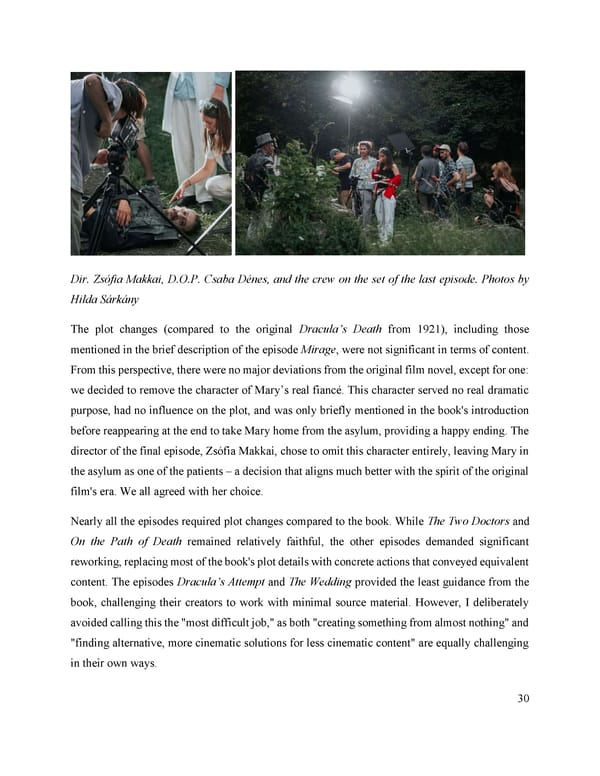Dir. Zsófia Makkai, D.O.P. Csaba Dénes, and the crew on the set of the last episode. Photos by Hilda Sárkány The plot changes (compared to the original Dracula’s Death from 1921), including those mentioned in the brief description of the episode Mirage, were not significant in terms of content. From this perspective, there were no major deviations from the original film novel, except for one: we decided to remove the character of Mary’s real fiancé. This character served no real dramatic purpose, had no influence on the plot, and was only briefly mentioned in the book's introduction before reappearing at the end to take Mary home from the asylum, providing a happy ending. The director of the final episode, Zsófia Makkai, chose to omit this character entirely, leaving Mary in the asylum as one of the patients – a decision that aligns much better with the spirit of the original film's era. We all agreed with her choice. Nearly all the episodes required plot changes compared to the book. While The Two Doctors and On the Path of Death remained relatively faithful, the other episodes demanded significant reworking, replacing most of the book's plot details with concrete actions that conveyed equivalent content. The episodes Dracula’s Attempt and The Wedding provided the least guidance from the book, challenging their creators to work with minimal source material. However, I deliberately avoided calling this the "most difficult job," as both "creating something from almost nothing" and "finding alternative, more cinematic solutions for less cinematic content" are equally challenging in their own ways. 30
 Lost Analogue: Exploring Film, Music, and Interdisciplinary Methods in Education Page 30 Page 32
Lost Analogue: Exploring Film, Music, and Interdisciplinary Methods in Education Page 30 Page 32